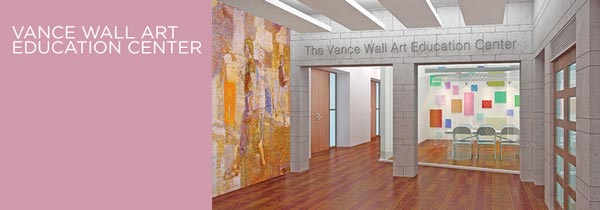"Do it" at Montclair Art Museum

This Saturday, Montclair Art Museum officially kicks off “do it” – a decades-long international project that, rather than paintings or sculptures or art objects of any kind, curates instructions written by artists for a participating audience. Ever since the idea was hatched by Hans-Ulrich Obrist and artists Christian Boltanski and Bertrand Lavier while sitting at a café in Paris in 1993, “do it” has traveled around the world. Now, the torch has been passed to MAM. This interview was conducted via email and phone with Leah Fox, Director of the Vance Wall Art Education Center at MAM, and Chief Curator Gail Stavitsky.
Jersey Arts: So, Paris, Australia, China, Denmark, France, Germany, Mexico, Costa Rica, Russia, Uruguay and now Montclair, New Jersey. The “do it” project keeps going, and keeps evolving. How has it changed from its beginning in Paris in 1993 to the event happening at Montclair Art Museum in 2016?
GAIL STAVITSKY: This show is constantly evolving - it’s different at every venue. The pool of instructions has grown since the early 90s. We chose 27 pieces out of 250. For this iteration of “do it”at MAM, there was a sort of natural selection at work because we wanted this show to be family friendly and open to all ages. In the past, “do it” has been mainly in galleries, some college campuses, and geared towards an adult audience. Our audience is more diverse – we designed this show for our community.
LEAH FOX: The whole thing started with instructions from 20 artists. Now it’s up to 250. The source we used was the “do it”compendium - the complete collection of instructions, published by Independent Curators International. One thing that’s driven the project’s evolution is the development of social media platforms. There are some pieces, for example, the Simryn Gill piece, that will have a social media component for public submissions. Gill’s instructions, “Somewhere Between,” encourages us to take a photograph with someone whom you perceive to be somehow different from yourself. There are also instructions that are more like ideas for contemplation rather than specific actions - these also lend themselves to social media. MAM has developed an entire social media plan for “do it,” which extends the exhibition beyond the physical space of the museum and reinforces the idea that anyone can participate in making art.

GS: It’s really a combination of performance art, conceptual art and interactive art. The ideas for the art began with the artists. The execution, the making of the art, is delegated to us - the audience.
JA: Even though the exhibit doesn’t open until this weekend, people are already working on “do it” projects at MAM. How has the Montclair community responded to “do it”so far?
GS: We’ve already reached out to the community and realized some of the pieces in advance of the show opening. That was the first phase of “do it”at MAM. The second phase starts when the show opens and the public can further interact with and shape the pieces.
LF: We have turned our galleries over to the public in new ways. Some of the instructions have been followed by groups from our community - others will be completed by visitors over the course of the exhibition. The process started with several projects this summer, including inviting a group of MFA students from Montclair State University to realize MAM’s first-ever Sol LeWitt wall drawing. LeWitt provided instructions to create a series of lines using a pattern of primary colors, reaching from floor to ceiling. The instructions are on the one hand very specific, while also intentionally open to interpretation and chance. No two versions of this drawing are alike.
Also, our SummerART youth and teen campers created a number of pieces for “do it,” including Yona Friedman’s “To Build A City” - architectural drawings of their ideal homes. Their versions, which include features like game rooms and a tiger’s den, are displayed alongside drawings by participants from the Montclair Institute for Lifelong Learning in the Vance Wall Art Education Center. The Museum’s African American Cultural Committee will receive a private architectural drawing workshop this fall to add their dream homes. Together, these pieces will construct a utopia.
JA: These instructions were sort of conceived of as “scores” – as in musical scores – by Obrist, Boltanski and Lavier. How drastically do the ways they are followed or interpreted vary from show to show?
GS: Christian Boltanski has one of the most prominent works in our show – “The School Children.” He was one of the original “do it” artists, and now, years later, our community is responding to his instructions. So, we have three walls in the show featuring unconventional, beautiful photographs of kids from Hillside School in Montclair.
LF: This was a question Gail and I pondered when we first read the “do it” compendium over a year ago. We quickly realized that some instructions, like the Felix Gonzalez-Torres and the Sol LeWitt, are very specific while others are more open to interpretation. Hannah Weinberger’s piece is a list of nonsense words. Local illustrator Kristine Lombardi created a framed piece of whimsical interpretations of each word. As part of our Free First Thursday Night program schedule this fall, we will have an open mic event where visitors take turns trying to read these words. It will be challenging, and a load of fun. I've tried it and can't wait to see people participate in this way. Several upcoming public programs will include opportunities for the public to create works based on “do it” instructions. Another one is Shimabuku's instruction that tasks us to make an artwork that would make an animal smile.
JA: What went into selecting pieces for this show? What were you, as curators, looking for?
LF: We quickly realized that “do it” is an ideal exhibition to follow the launch of the new Vance Wall Art Education Center - a manifestation of our increased commitment to deepen our community partnerships and broaden our reach both on and off-site. Our goal in identifying instructions was to provide opportunities for the public to actively engage in the galleries - to ‘do it’ in the museum.

GS: I looked at a lot of installation shots from past “do it” shows because I wanted to build on that history and refine the way the work is presented to the audience - and to participants. We wanted to create a show at MAM that was distinct. For example, historically, a lot of “do it” shows were very casual, and kind of look thrown together - which is in the spirit of the whole project. I was just very lucky - MAM has a very talented curatorial department, and a very talented graphic designer, and we were able to pull it all together in a very unique way. I’m really excited to see what the reaction will be to the way we’ve designed “do it.”
JA: Since this is the longest-running art exhibit, there must be some “do it” lore that has accumulated over the years.
LF: I don't know of any specific anecdotes, but it would be pretty exciting to get all of the “do it” curators in a room to talk about their experiences and the outcomes from their communities. I've become increasingly interested in the idea that each venue’s installation is unique in that it captures a specific time and place that provides a window into our values as a community, and as individuals. This exhibition will be completely archived for ICI, and it will be fascinating to see the similarities and differences across cultures and decades.
For example, museum visitors of all ages can write a wish on a leaf and add it to Yoko Ono’s “Wish Piece” tree. Wishes are sometimes very personal, or are grander dreams for the world. I'm very curious to know if and how these wishes have changed over time.
JA: Are there any hardcore “do it”-ers who have been following “do it” exhibits around the world like The Grateful Dead?
LF: I sure hope so!
Celebrate the exhibitions "do it" and "Janet Taylor Pickett: The Matisse Series" at the MAM Lawn Party on Saturday, September 10, 12–5 p.m. There'll be more than 20 local bands and performers, family-friendly activities and food vendors serving a variety of delicious fare. MAM members are invited to an exhibition preview before the community event. All proceeds support MAM Art Truck artist residency programs at Side Door Montclair after-school locations. Can't make it? Don't worry, "do it" will be at the Montclair Art Museum, 3 S Mountain Ave, Montclair, NJ 07042, September 10 through December 31.
